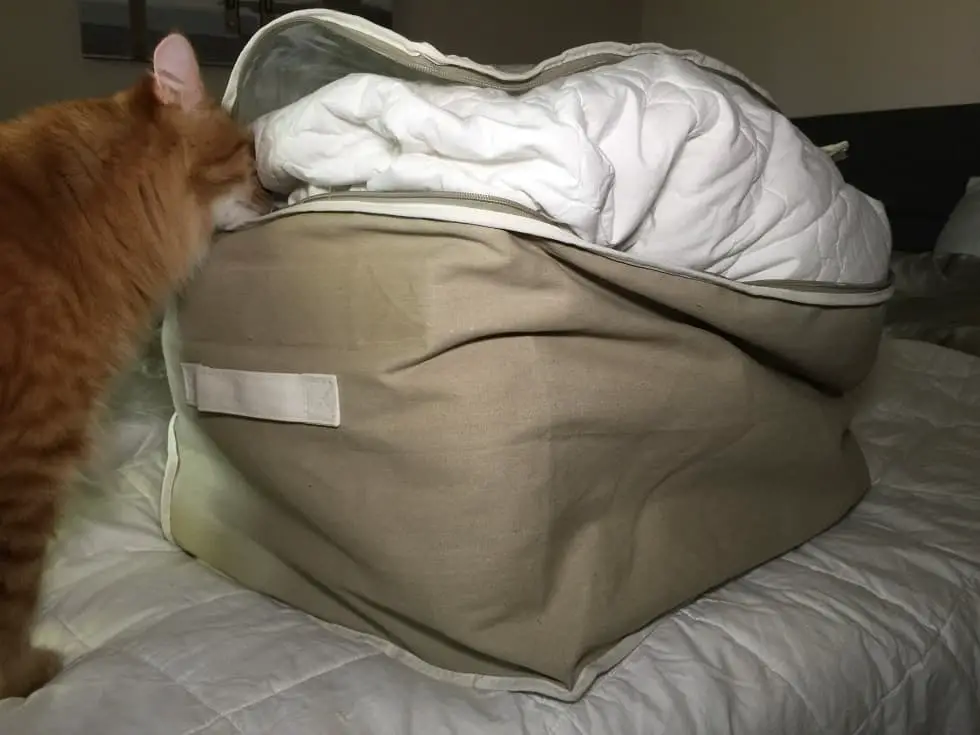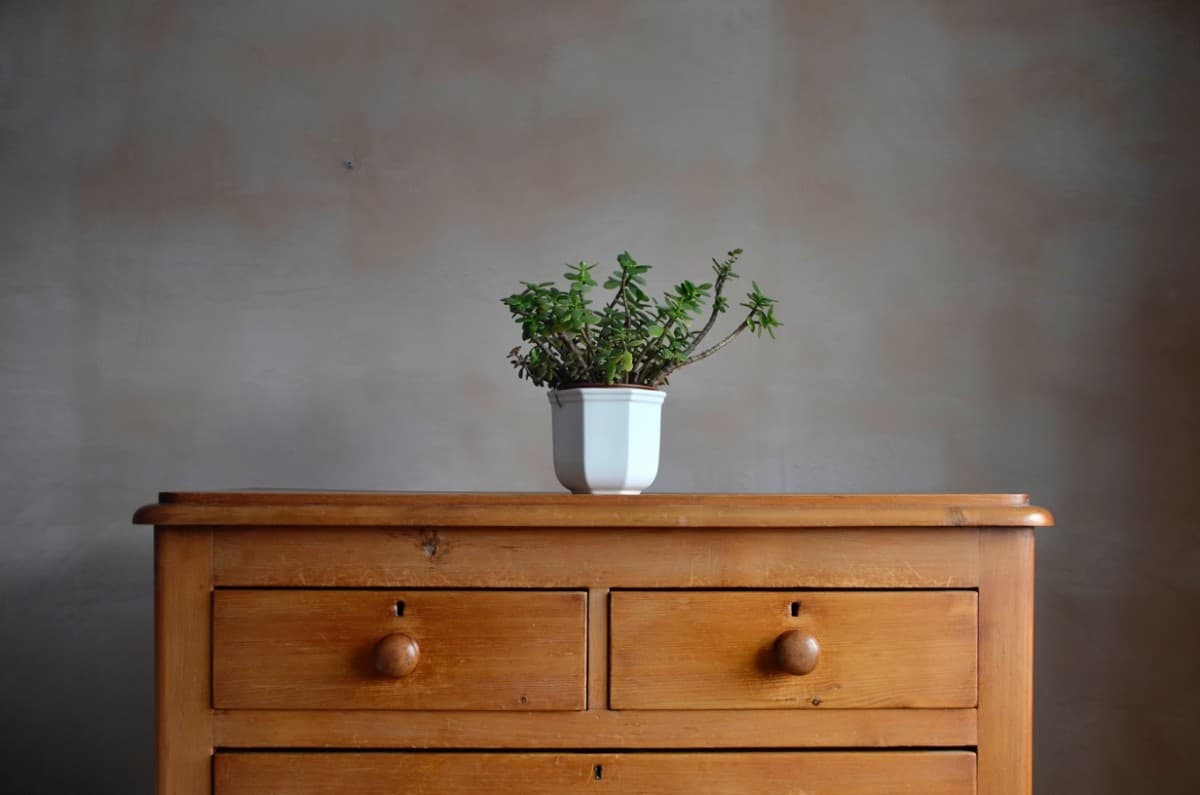Table of Contents
**This page contains affiliate links and I will be compensated if you make a purchase after clicking on my links**
Photo by Zbysiu Rodak on Unsplash
You probably have too much bedding. Sheets, blankets, comforters, pillows. Plus, towels. One set for summer; another set for winter. Extra sets for when you do laundry. Plus, extra for guests.
(This may be especially a problem if you blog on the topic and purchase quite a bit to test out.)
I have three bedroom closets for my personal use. It’s not enough.
How am I going to stash all my bedding, while protecting it from potential damage?
1. Store in a dry place
The number one criteria for all bedding storage (and this applies to your clothing as well) is to keep it dry. The last thing you want is for mildew (mold) to grow.
This is why you’ve been told to take the plastic dry-cleaner bags off your freshly dry-cleaned clothing before hanging those items in your closet.
Store your items in a place with good airflow.
For bedding that you will use soon, you can stack it in a linen closet, a dresser, or a handy blanket bench.
Quilts and other blankets can even be hung on hangers in your closet.
I’m not a big fan of the linen closet, because 1) what linen closet? And 2) stacked items stored for any length of time will get dusty. Or your furry friend creates a nest for themselves (see pic below).
If you have old flat sheets, you can use them to wrap up or cover your current bedding before storing it to protect from dust.
Most of the time you’ll want your bedding close at hand for seasonal changes or guests. Blanket storage bags are a convenient way of storing your bedding. These soft-sided boxes can be stacked at the bottom of your closet or hidden under beds.
These bags have a zipper closure and are made with see-through panels and some type of breathable nonwoven synthetic fabric.
Not as neat, but cotton (breathable) drawstring bags are also another way of storing bedding.
Avoid storing your bedding in big plastic storage bins. If you must, either vacuum-seal your items first (below) or throw in a packet or two of desiccant. Desiccants contain silica or other chemicals designed to absorb excess moisture. Some packets are even designed to be “recharged” in the microwave.
Long-term storage
If you are storing for a long time, wrap the bedding in an old sheet (or acid-free paper) then place it in a storage container. Obviously, don’t store it in your damp basement. Choose the dry attic instead (assuming it doesn’t get too hot).
What should this storage container be made of? Blanket storage bags, cloth bags, and cardboard boxes all breathe but they don’t protect against rats or mice chewing through. And plastic storage bins don’t breathe.
Our grandparents stored their bedding in wooden cedar-lined chests.
Realistically, you may have to use the plastic bins with plenty of desiccant packets.
For heirloom items include acid-free boxes and acid-free tissue paper.

One reason I don’t have a linen closet. (Photo by author.)
2. Store in a dark place
Unless you paid a lot for your widows they probably allow a great deal of ultraviolet (UV) light into your rooms. This will damage all fabrics in the long-term.
Pinterest is full of cute ways to display your collection of blankets and quilts. Blanket ladders, open shelves, large baskets, etc. Just keep in mind those bright colors will fade with exposure.
3. Clean items before storage
Wash or dry-clean your items before storage. This removes any critters and their eggs, including wool-eating moths or dust mites. Plus, washing will remove the proteins we slough off that these critters feed on.
You probably store multiple items together, so keep dirty items from contaminating the clean items.
If you don’t wish to spend a fortune on dry-cleaning, place select items in a plastic bag and put them in the freezer overnight.
Ironing may also help eliminate some of the critters and their eggs.
Also thoroughly vacuum the area where you store bedding, such as a closet or chest. Don’t forget the ceiling. These are moths after all. They can lay their eggs anywhere.
4. Vacuum seal items
To keep items free of bugs, and save space, consider vacuum-seal bags. These bags come in a variety of sizes and use either your vacuum cleaner or an included hand pump to remove the air.
The vacuum shrinks the size so that you may fit 2-3x as much in the same space!
Tip: if you plan to store the vacuum-sealed bags in a second container, such as a plastic bin, first place the filled bag in the second container before applying the vacuum. This way it will fit perfectly in the second container.
You will be potentially sealing in some moisture, so you may also wish to throw in a desiccant packet. Note a much smaller packet is required as there is now less air. This is especially important if you live in a humid area.
There has been some concern (but no actual data that I could find) that vacuum-sealing over an extended period, such as more than six months, may compress fibers to such an extent that they will take a significant amount of time to decompress once released. This is especially a concern with natural fibers like wool, fur, and “fluffy” items such as comforters.
Note, down or feather-filled comforters or pillows should not be vacuum-sealed as it may damage the feathers.
Vacuum sealing may be best for only seasonal bedding that will get “released” during the year. For long-term storage perhaps stick to synthetic fabrics only.

Blanket storage bags are a good option for all your bedding, including mattress covers (shown). Once zippered, they are even safe from pet furs and little claws. (Photo by author.)
Wool and other fabrics derived from animal fur
Wool needs special consideration. Likewise, any other bedding made from animal fur, including cashmere, angora, alpaca, etc.
Certain moths lay eggs on wool. These eggs hatch into larvae that eat the wool. They are attracted to our proteins, so again, washing and dry-cleaning are important.
Also, if you like to shop for vintage clothing, dry-clean (or freeze) these items before hanging in your closet. The last thing you want is to introduce the critters into your home.
Like other fibers, wool is best in a breathable storage container. However, if moths are a concern you may need to break that rule and seal them in an air-tight plastic container. (Don’t forget your desiccant.)
Alternatively, make sure they are clean, then place them in a zippered blanket storage bag.
To protect wool, the traditional approach is to use old-fashioned mothballs. Mothballs are made of pesticide, which may be both a carcinogen and a neurotoxin. This might be fine for items stored in your attic, but probably not something you want in your bedroom closet close to where you sleep every night. Also, to be effective they need to be enclosed in an air-tight container.
Instead of mothballs, most of us prefer the scent of cedar, which is available in blocks, balls, and shelf-liners. However, it’s unclear if this small amount of cedar is enough to be an effective moth deterrent.
Tip: if you use cedar, sand it with sandpaper to re-release the cedar scent
Don’t place the cedar directly against your bedding as it may release sap. Instead, wrap the cedar with tissue paper.
Other strong-smelling dried herbs, such as lavender, peppermint, rosemary, eucalyptus, cloves, and thyme, are also thought to deter moths. Probably unlikely, but satchels are inexpensive, and your things smell nice.
Some plant essential oils come in spray form. Be very careful around your furry friends, as many of these may be toxic to them. If in doubt, always check the ASPCA website list of toxic plants for both cats and dogs.
Another option is to set up moth traps in your closet. These release a pheromone to attract the male moths and trap them with sticky paper. According to the manufacturer, they should be replaced every three months. This may be a better option if you know you have an infestation.
Note that “pantry moths” found in your kitchen are different than clothes moths and use different traps with different pheromones.
5. Donate unused bedding
Keep a few old flat sheets and around, plus a few pillowcases. Flat sheets make great drop clothes if you need to protect things from dust or paint. Also, they can be used to wrap other bedding items for storage.
Likewise, pillowcases can make great storage bags. If you are handy, you can even add a drawstring.
If you have newer bedding that matches, keep an old sheet to create repair patches.
If you have ceiling fans, pillowcases are an effective way of dusting the blades without the dust falling on your head.
Otherwise, if you have extra bedding—especially bedding you haven’t used in several seasons—consider donating it.
It is much more cost-effective than purchasing more storage containers.
Or a bigger house.
Want to learn more about the products mentioned?
[If you experience issues with menus or links not working, it is most likely due to your Ad blocker.]


